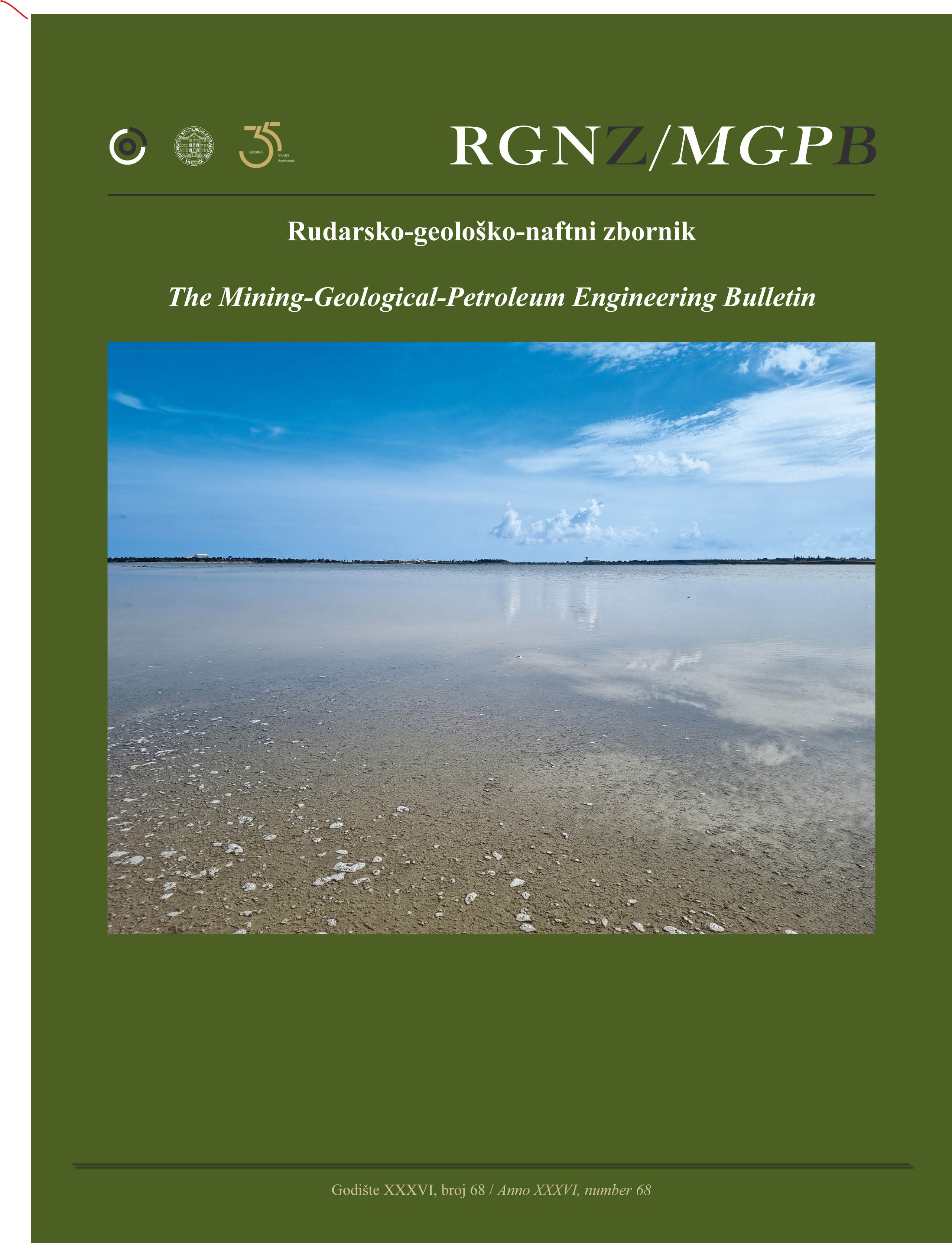Fluvial sedimentology of the river Ethiope sediments, Niger Delta, Southern Nigeria
DOI:
https://doi.org/10.17794/rgn.2024.2.4Keywords:
River Ethiope Nigeria, fluvial sedimentology, sediments texture, sediment transport, hydrodynamic conditionsAbstract
Despite modern advances in the study of rivers globally, there remains a plethora of work to be done especially in the area of fluvial sedimentology of some present-day river systems. Previous studies on fluvial sedimentology of the sediments of the river Ethiope (in southern Nigeria) are meagre. Grain size analytical methods are indispensable to infer siliciclastic sediments' hydrodynamic conditions, transportation mode(s), and sedimentary environments. Twenty-eight samples (n=28) of the river Ethiope sediments were selected and studied using granulometric analyses (mechanical sieving and pebble morphometric methods). The granulometric analyses results revealed that the obtained sediments were comprised of 82.75% sand, 9.33% gravel, and 7.92% mud. A ternary diagram of sand-gravel-mud shows the sediments are mainly gravelly sand, with few indicating slightly gravelly sand, gravelly muddy sand, muddy sand, and sandy gravel. The grain size statistical analysis shows that the river Ethiope sediments consist of medium to coarse, poorly-sorted to moderately well-sorted, strongly coarse skewed to strongly fine skewed, and very platykurtic to extremely leptokurtic sands. The pebble morphometric analysis revealed that the pebbles range in shape from bladed (B) 22%, compact-bladed (CB) 17%, compact (C) 16%, compact-platy (CP) 16%, compact-elongated (CE) 12%, platy (P) 5%, to elongated (E) 5%. The integration of bivariate plots, ternary diagrams, and C-M patterns plotted for the sediments of the river Ethiope indicated a fluvial environment with sediments characterised by low to moderately high energy that transport sediments of different sizes and grades through saltation, traction, and suspension modes. This study also confirms that sediment transport modes such as saltation, traction, and suspension typify river environments. In general, the existing sedimentologic models derived from grain size analysis of sediments and pebble morphometric methods obtained from modern-day rivers can be applied to better understand transport modes, sedimentary processes, and palaeoenvironments of their ancient counterparts.
Downloads
Additional Files
Published
How to Cite
Issue
Section
License
Copyright (c) 2024 Israel Aruoriwo Abiodun ETOBRO, Omabehere Innocent Ejeh, Glory Oghenevwede Ovwamuedo

This work is licensed under a Creative Commons Attribution 4.0 International License.
Creative Commons-BY
Authors who publish with this journal agree to the following terms:
In agreeing this form, you certify that:
- You read the ethical codex of the RGN zbornik available at journal web.
- You submitted work is your original work, and has not previously been published and does not include any form of plagiarism.
- You own copyright in the submitted work, and are therefore permitted to assign the licence to publish to RGN zbornik.
- Your submitted work contains no violation of any existing copyright or other third party right or any material of an obscene, libellous or otherwise unlawful nature.
- You have obtained permission for and acknowledged the source of any illustrations, diagrams or other material included in the work of which you are not the copyright owner.
- You have taken due care to ensure the accuracy of the work, and that, to the best of your knowledge, there are no false statements made within it.
- All co-authors of this submitted work are aware of, and in agreement with, the terms of this licence and that the submitted manuscript has been approved by these authors.
Publication licence
You retain copyright in your submitted work, according to journal license policy (CC-BY). By signing this form you agree that RGN zbornik may publish it under the publication licence. In summary the licence allows the following:
Anyone is free:
- To copy, distribute, display, and perform the work.
- To make derivative works.
Under the following conditions:
- The original author must always be given credit.
- The work may not be used for commercial purposes.
- If the work is altered, transformed, or built upon, the resulting work may only be distributed under a licence identical to this one.
Exceptions to the licence
In addition to publishing the work printed under the above licence, RGN zbornik will also enable the work to be visible online.
The journal editorial can change the licence rules anytime but it cannot retroactively restrict author(s) rights.


